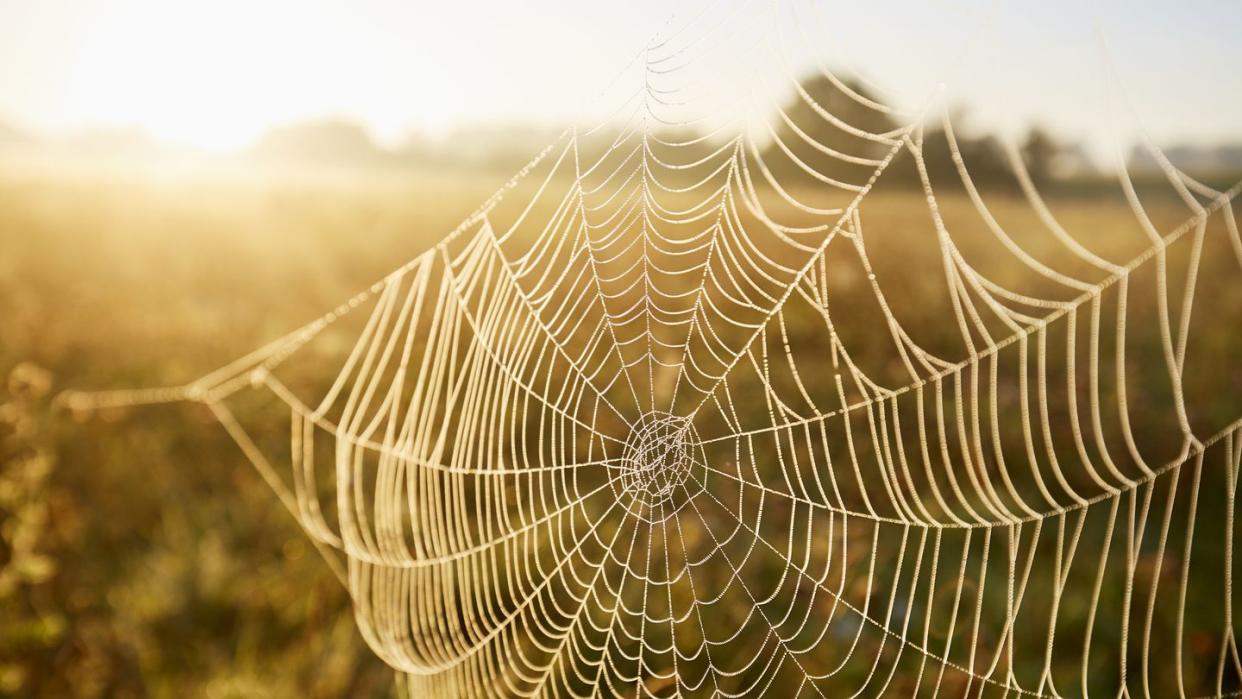Spiderwebs Aren’t Just Bug Traps. They’re a Secret Lifeline for Endangered Species.

Scientists are using spiderwebs to track endangered species, according to a new study.
It turns out that the sticky structures can be swabbed for environmental DNA, or eDNA, which can tell scientists what animals are in the area.
The team behind the study believes their new technique could paint a very accurate picture of what creatures are in an area at any given time.
Scientists may soon be trying to use their spider senses to track animals around the globe.
Well, sort of. More accurately, they’re trying to make use of one of the greatest assets that spiders have to offer—their webs. According to a recent study published in the journal iScience, a group of researchers is proposing that we could use spider webs to track the movements of endangered and often hard to-track-creatures.
“Spider webs are not just beautiful, they could be our secret weapon to better understanding nature,” lead author Joshua Newton said in a press release. “Our study shows that these webs can help us keep tabs on different animals without disturbing them.”
If there’s one thing pretty much everyone knows about spiderwebs, it’s that they’re designed and built to catch things. And that’s why this team of researchers think they’ll be useful. In their study, the team looked at the environmental DNA (or eDNA) caught in 49 different webs and examined it to see what creatures had left it behind. All in all, they found eDNA from 93 different animals.
eDNA is becoming a serious part of the conservation conversation, as it allows us to tell if an animal is in an area—or has been fairly recently—without actually spotting the animal itself. “Every species that exist[s] in a given environment, in a given ecosystem — they may be dying, decomposing, urinating, defecating, breathing, whatever,” Morten Allentoft, one of the authors on the study, told NPR. This “facilitates the shedding of cells into the environment, and all cells have DNA in them.”
So, finding animal’s genetic leftovers can be as good a sign of their presence as a fresh kill or a defecation. Better, even, because it spreads out. It’s a lot easier to swab some plants than it is to find an active burrow.
But luckily for the researchers, it doesn’t seem to spread out that far. “We had this crazy idea that spider webs would capture airborne DNA from local vertebrates,” Allentoft said in the press release. “Our initial results from Perth’s hills were promising with a bunch of local wildlife detections, but the true potential of this method unfolded when we repeated the spider web sampling in Perth Zoo and suddenly got giraffe and rhinoceros DNA in the webs.”
Basically, the team was able to confirm that the spiderwebs were only picking up the eDNA of local animals currently occupying the spaces nearby. That means they should be reliable indicators of whether or not a rare beast is in the area at any given time.
And not only do the spiderwebs seem to be able to give researchers a pretty good sense of what lives nearby, they should also have the potential to give a pretty accurate estimate of when certain creatures were last in the area as well. The team told NPR that if they were able to use the spiderwebs of certain orb weaver spiders that build new webs every day, they could functionally get a survey of what animals are where every single day.
Plus, it’s non-invasive. No need for capturing and stressing out an already endangered animal. Just swab a spiderweb and go about your day.
The technique is still in its infancy, but its results are exciting to the team—especially because endangered animals aren’t the only potential targets. “Scientists typically rely on direct observations to study animals, but this research widens the scope of eDNA-based biodiversity monitoring, highlighting the efficacy of spider webs in capturing vertebrate eDNA,” Allentoft said in the press release. “Our results even identified invasive species, such as red foxes, house mice and black rats, showcasing the potential of spider webs as tools for ecological monitoring.”
You Might Also Like

